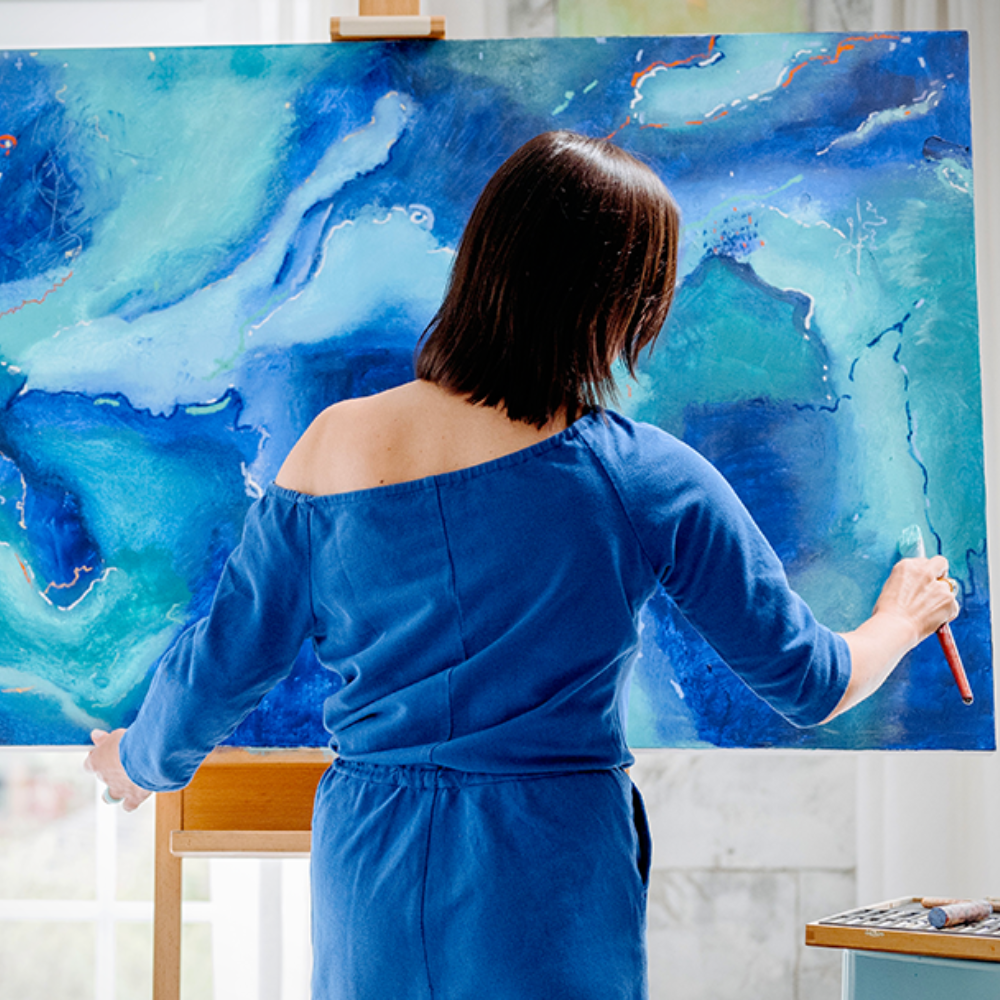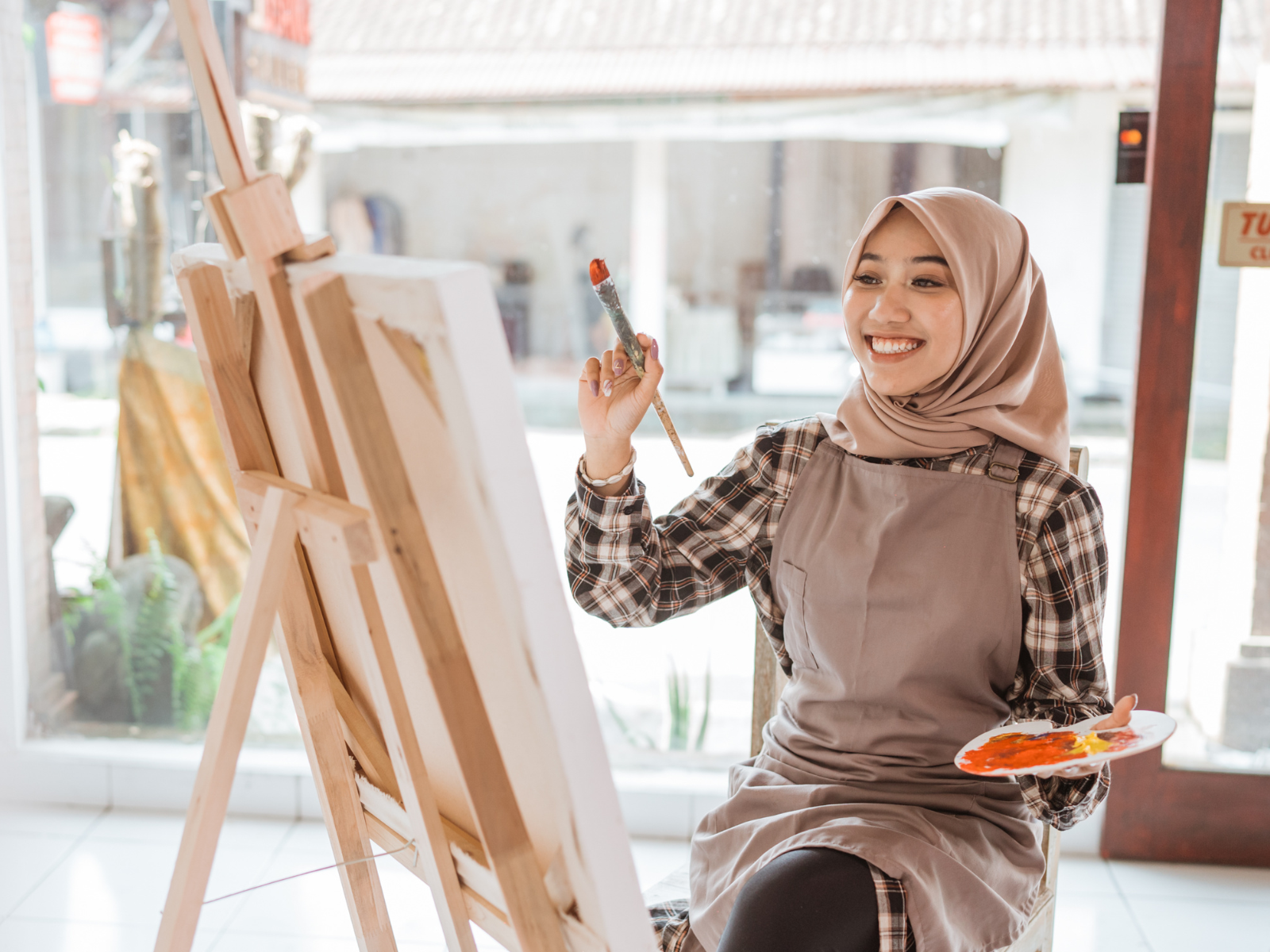Do you ever look at a piece of art and wish you could create something just as meaningful?
There's nothing more liberating than the feeling of creating something for the sake of artistic expression.
Art has always been a form of communication, a medium for artists to share their thoughts, emotions, and beliefs to an audience.
However, creating art is not just about producing something aesthetically pleasing or technically sound.
It's about uncovering the deepest parts of yourself and bringing them to life on a blank canvas.
That's why reflecting on your artwork periodically can have a profound effect on your creativity.
There is no need to be intimidated or overwhelmed—being creative does not have to be hard work.
Instead, by taking some time for self-reflection, you can get in touch with your inner artist and take the first step towards exploring the possibilities of creativity!
Meditation allows you to connect with yourself on a deeper level and harness a more profound artistic expression.
In this blog article, we will explore the benefits of meditation for artists and how it has transformed the relationship between self-reflection and all arts and crafts.
We will also discuss how to use this practice as an exercise for getting in touch with your inner artist and unleashing your creative potential.
Whether you're an old hand at the easel or someone who's just picked up a paintbrush, reflection's guaranteed to add a new dimension to your artistic journey.
Get ready for a journey filled with exciting stories, profound insights, and vibrant descriptions that will make your creative heart skip a beat!

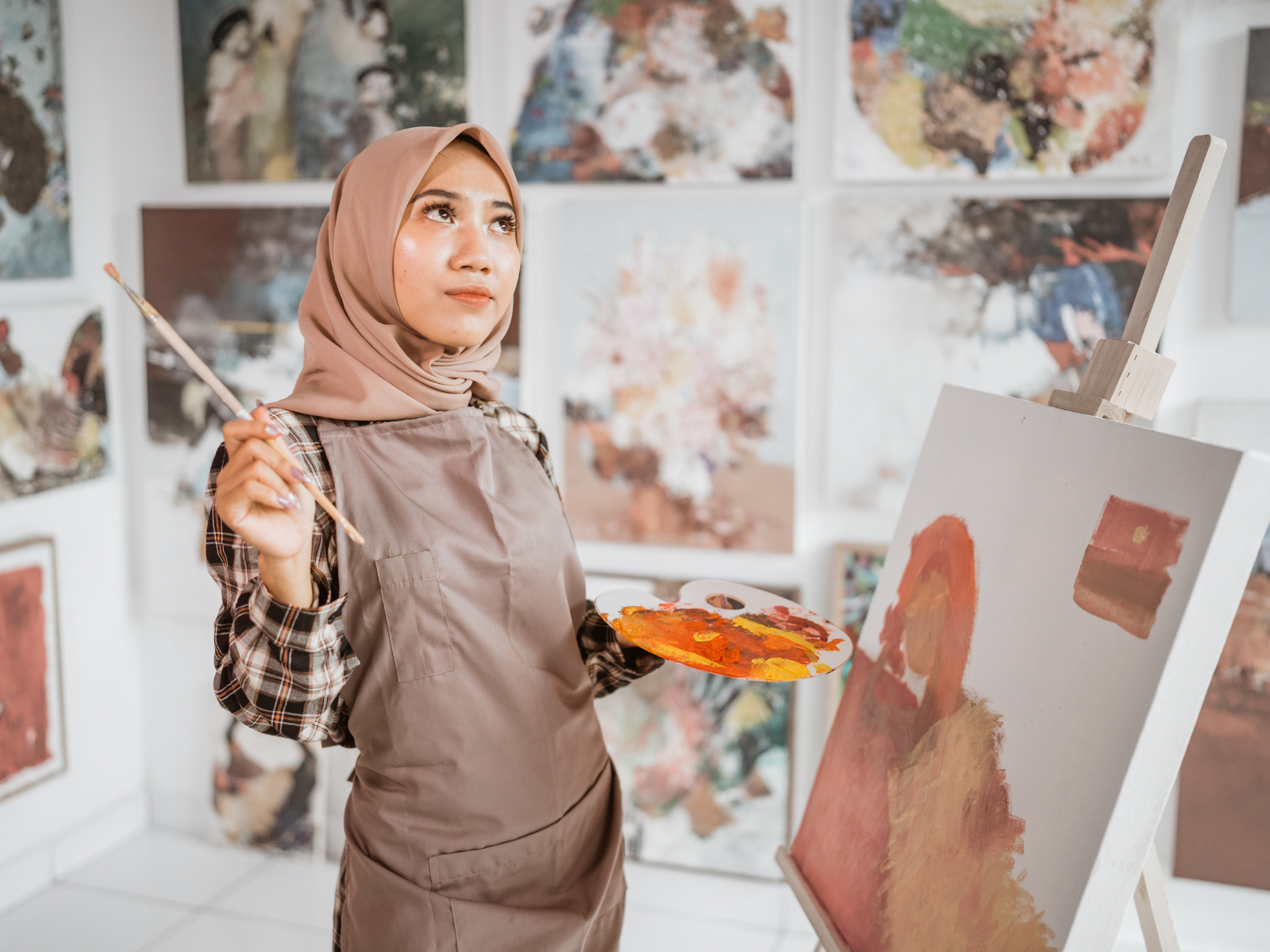

The Art of Reflection: A Game-Changer
Reflection in art is not just about looking back and analyzing your work; it's also a way to enhance your creative process.
It's a mental process, a deep dive into your inner world that challenges conventions and ushers in groundbreaking trends.
It's the silent conversation between you and your canvas, the dance of thoughts that shapes your brush strokes, and the introspection that breathes life into your creations.
It allows you to explore different aspects of yourself, connect with your emotions, and open up to the creative possibilities within.
It provides you with a platform for self-discovery and can help you uncover a deeper truth about yourself.
With reflection, you can release the pressure of having to produce something perfect and instead, focus on the beauty of creation.
Reflection can be a powerful tool for self-discovery and expression, helping to boost student confidence and to combat creative block.
It encourages you to look within and access your innermost emotions, thoughts, and beliefs, in order to unleash your full potential as an artist.
When professional artists and students reflect upon their work, they are able to recognize patterns and gain insight into the artistic process, helping you to step outside of yourself and view your own images and art from a fresh perspective.
Whether in art class as a student artist, professional artist with an arts education degree or business, or just as a hobby, by practicing self-reflection, you can gain insight into the creative process and become more in tune with your artistic vision.
Reflection can help you get in touch with your inner self and unleash your full potential within the creative learning process, giving you the space to explore and express yourself through your art.
It can help to broaden your horizons, build self-confidence, and uncover a deeper truth about yourself.
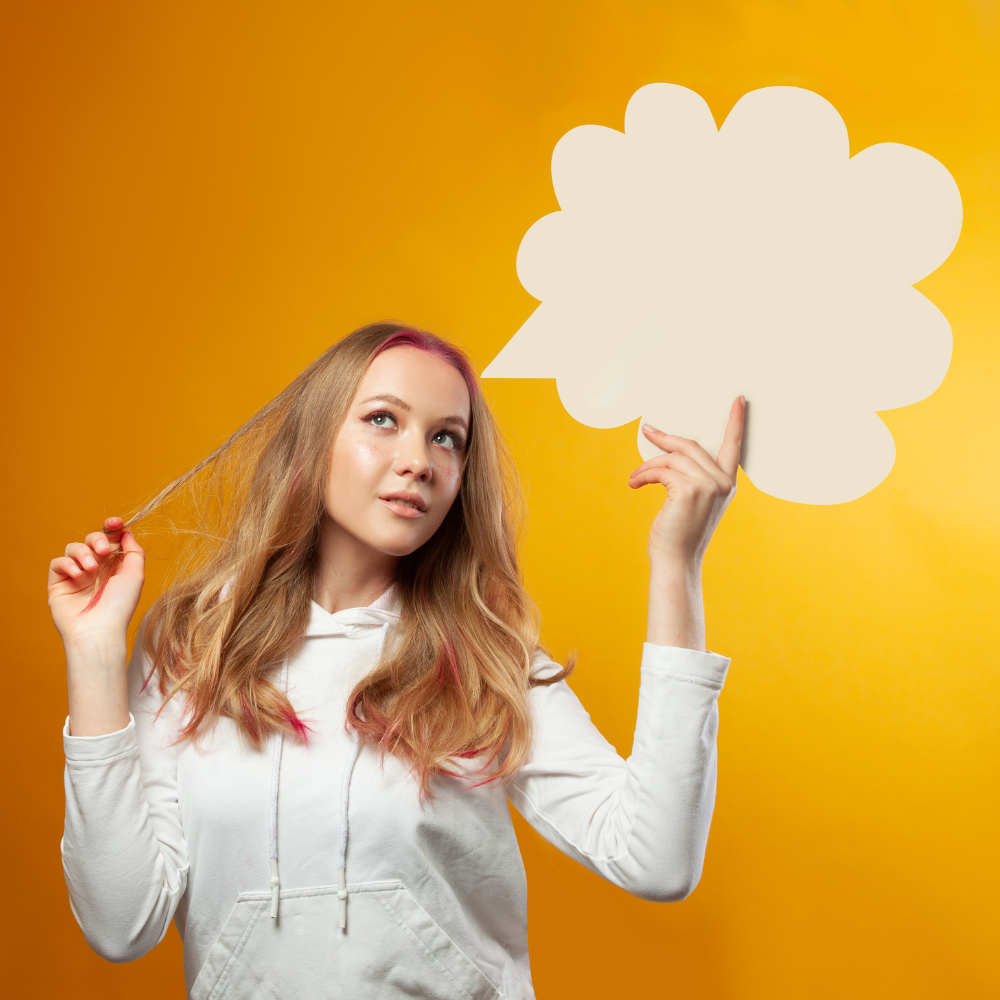

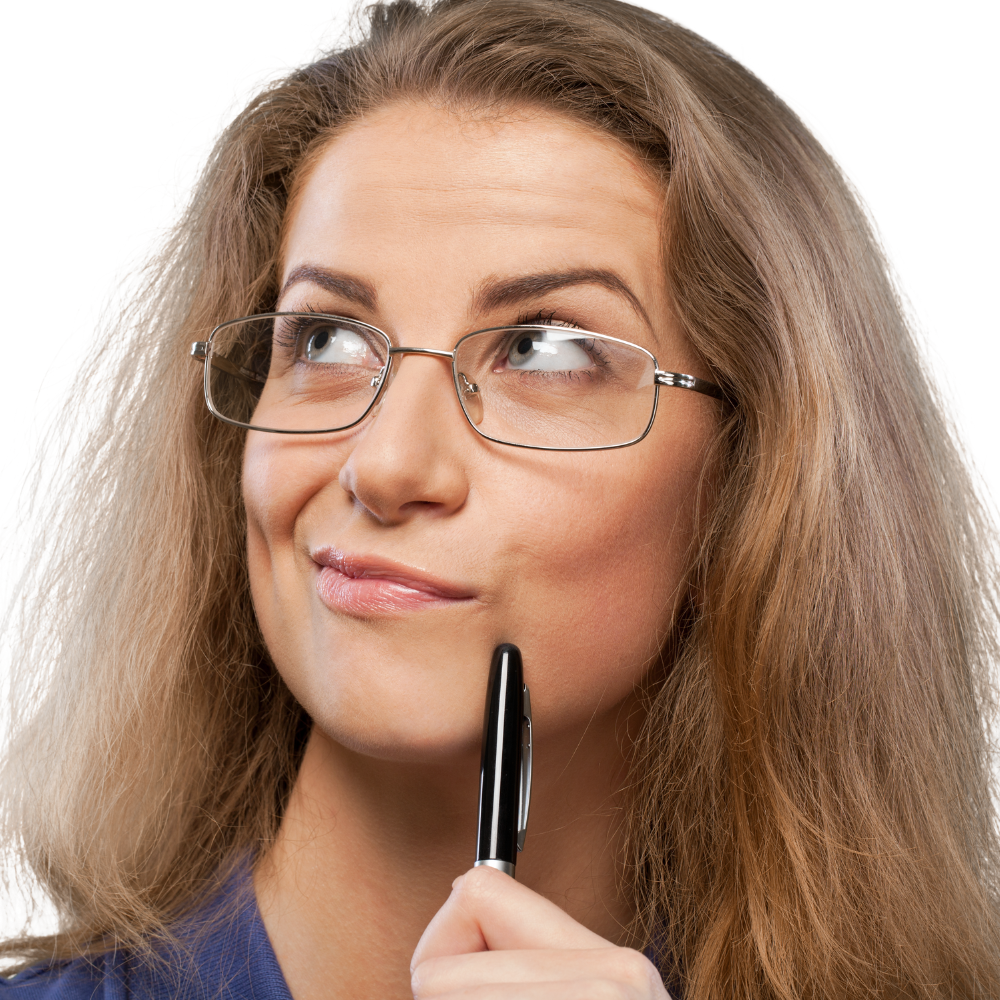
Breaking the Mold with Reflection
Here's a little secret: every great artist you admire has one thing in common - they've mastered the art of reflection.
It's the secret ingredient to their success, an invaluable tool that helps them stay in tune with their creative aspirations.
Your own reflection practice can help you break out of the mold and style your art in a way that's unique to you.
It can show you where other artists have gone wrong and help you make a bold new mark in the artistic world.
By taking the time to reflect on your work, you can refine your style and create art that is truly meaningful to you.
The ability to reflect on your experiences, emotions, and ideas is what sets great artists apart from the rest.
It enables you to tap into your innermost selves and use that knowledge to create something truly unique.
By engaging in self-reflection, you can unlock the creative potential within and create art that is authentic to your own identity.
Your art becomes visual representations of your reflective journeys, and you can use it to express stories in a powerful way.
Self-reflection is a vital part of any creative process, and it can help you explore the depths of your creativity.
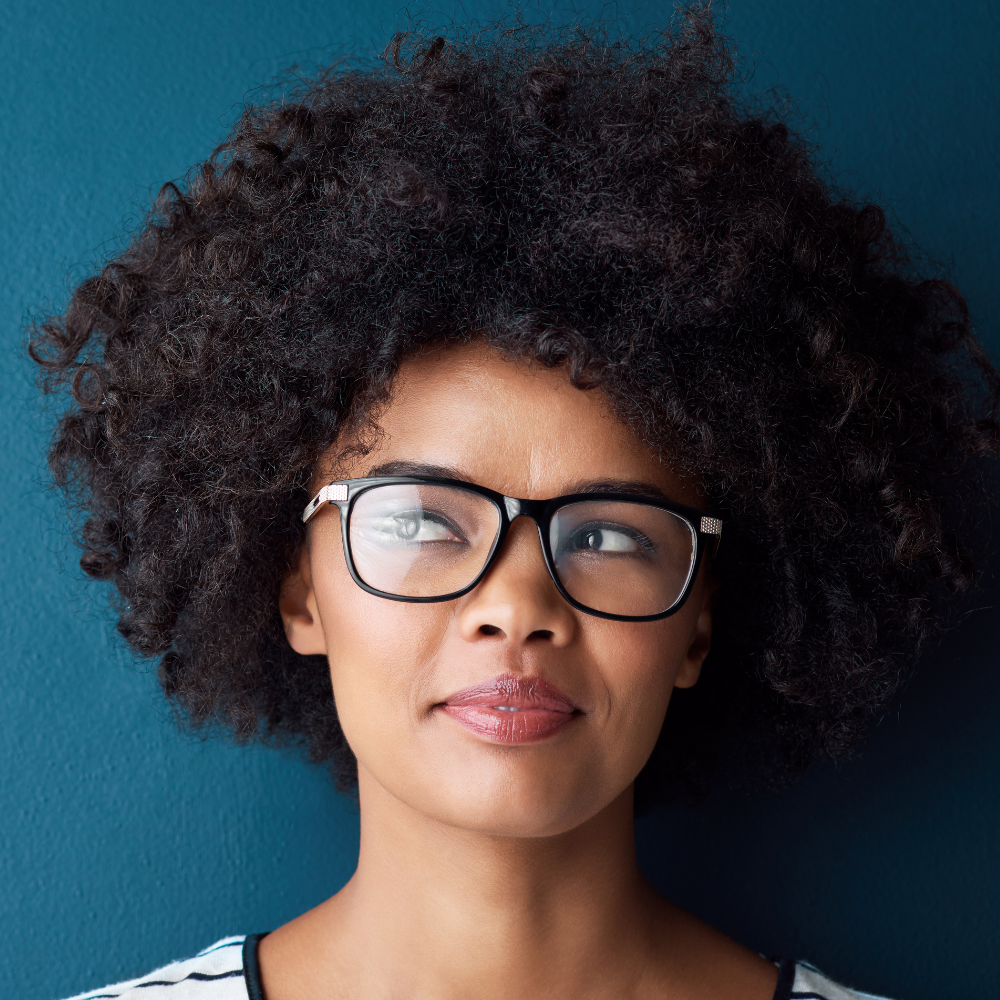
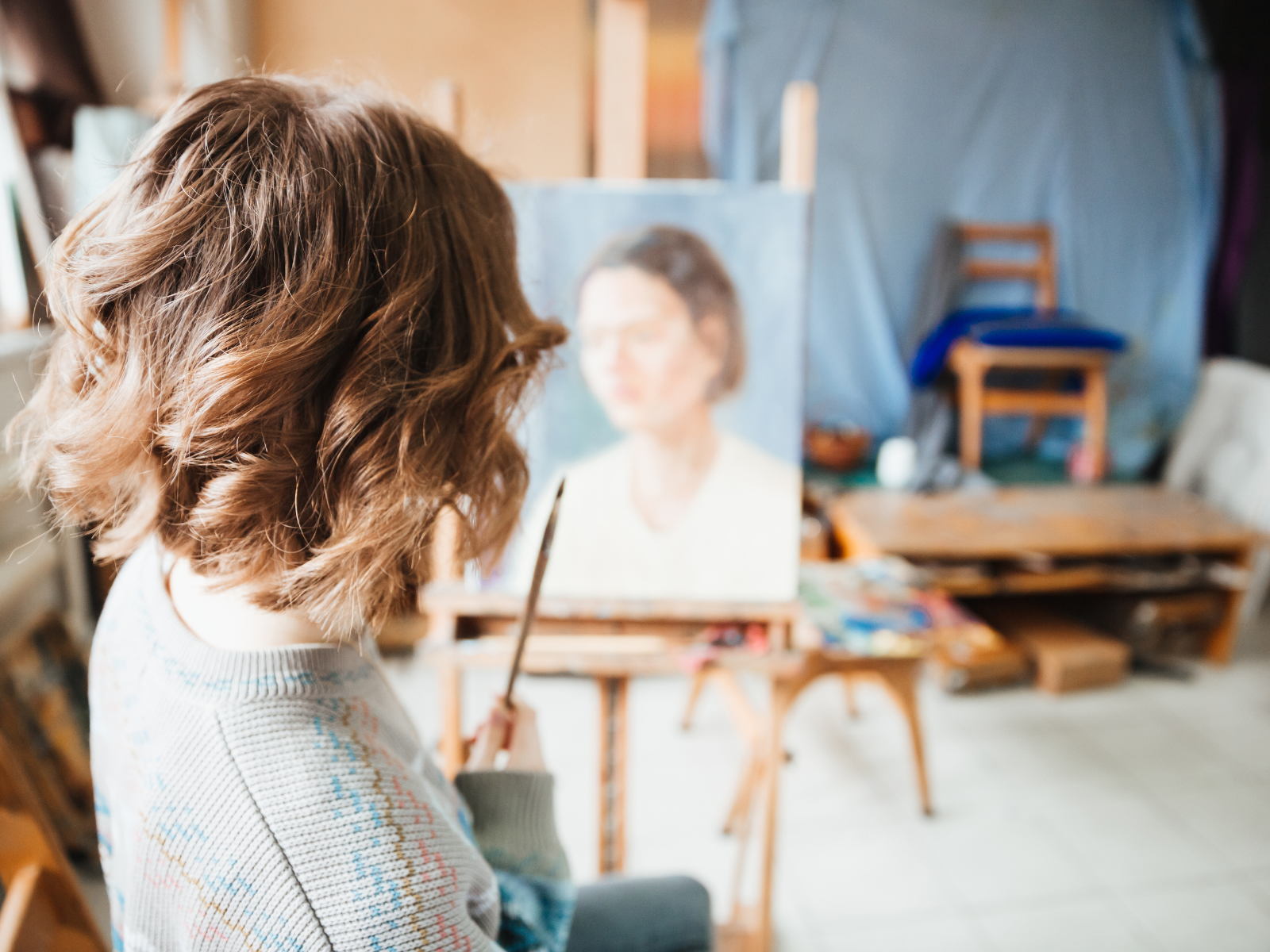
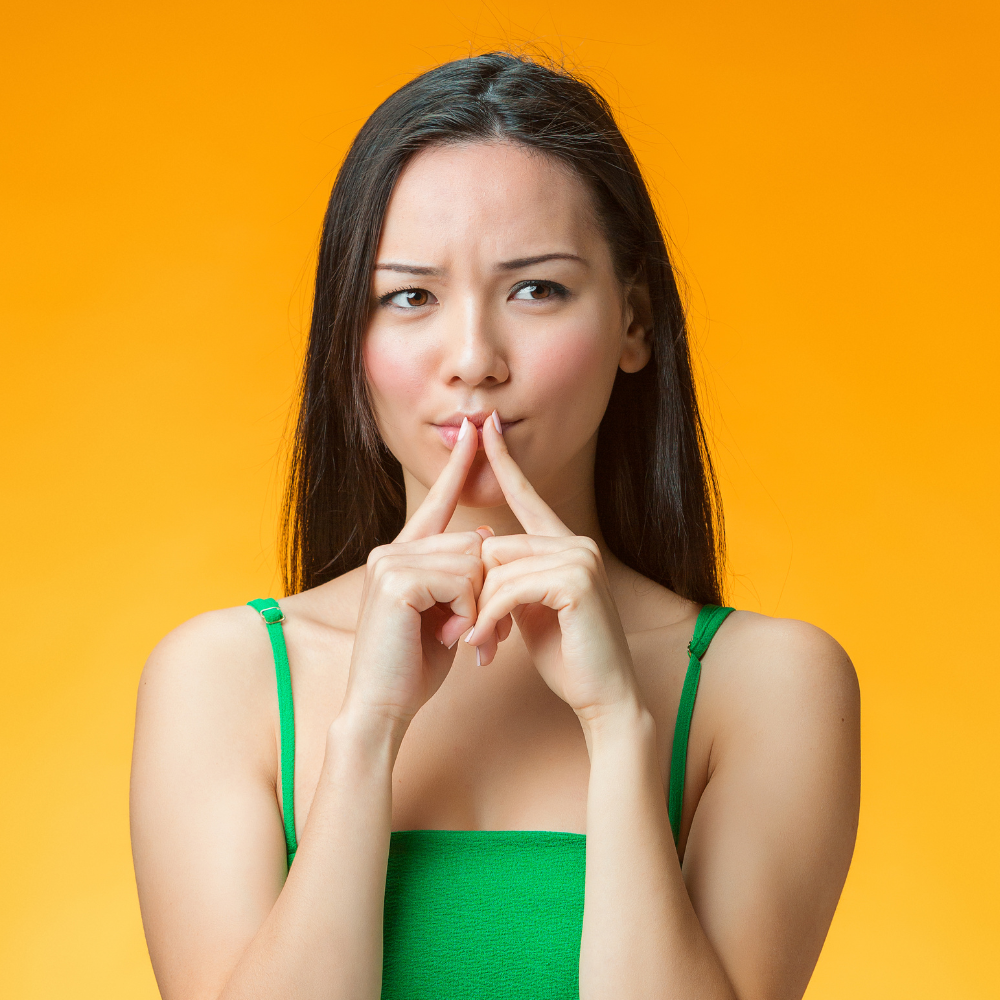
Reflection as a Catalyst for Innovation
Artistic reflection isn't just about introspection; it's also a powerful catalyst for innovation.
It encourages us to question the status quo, explore new perspectives, and experiment with different techniques.
This adventurous spirit births exciting new trends in art, keeping the artistic landscape dynamic and ever-evolving.
The key to innovating with reflection is to be open-minded and embrace change.
By encouraging yourself to think outside the box, you can bring your unique perspectives to the canvas and create something truly remarkable.
Reflection is the ultimate exercise in self-expression, and it can help you unlock the creative potential within.
Exploring art through reflection can be a truly transformative experience.
It can help you break down barriers and discover a newfound sense of creative freedom.
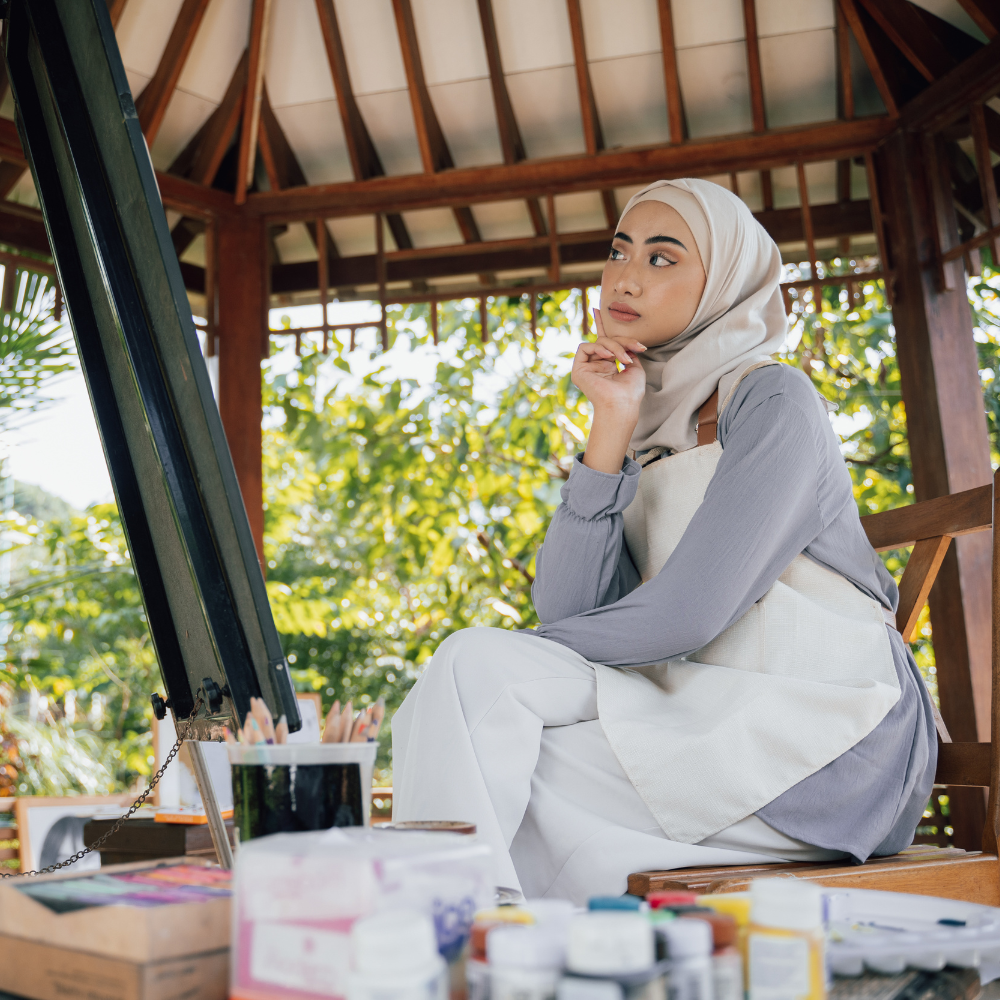

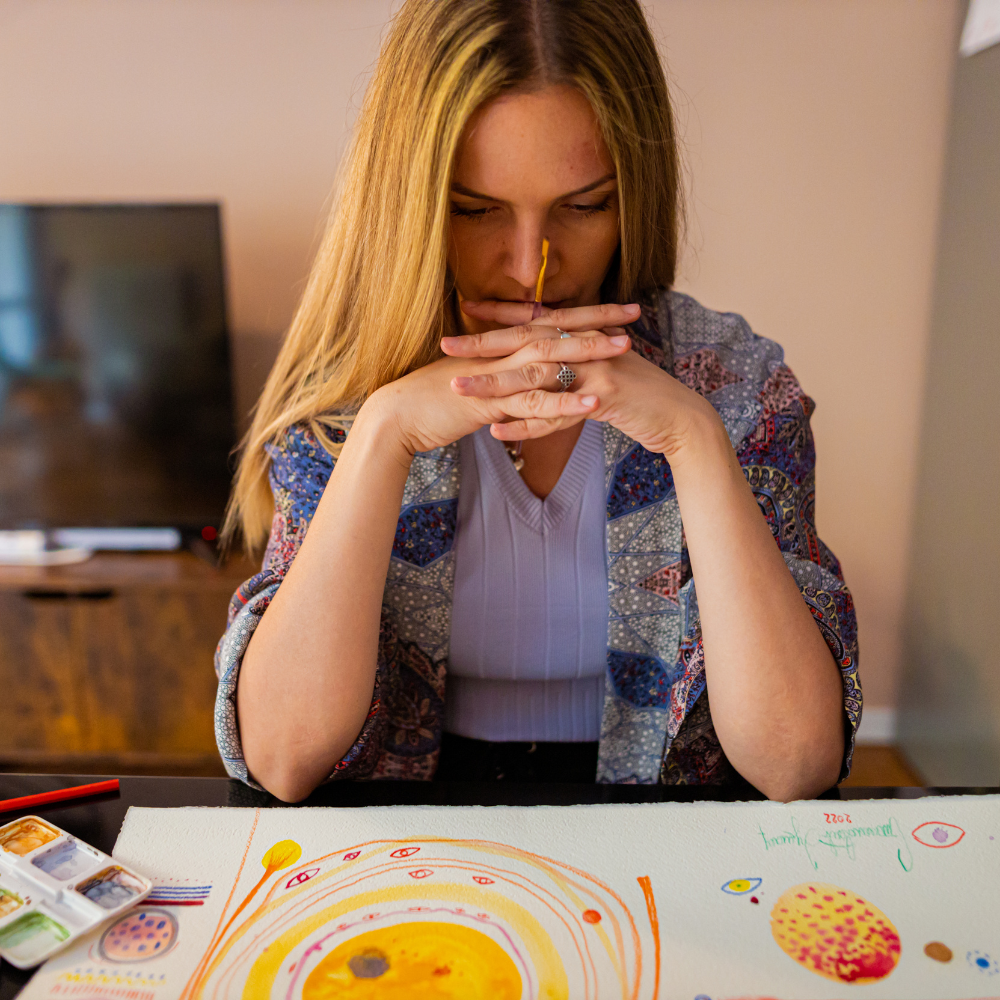
Masterful Meditation: A Mindful Practice
In today's world, where the pressure to keep producing work is high, it's important to take a step back and reflect on your art.
Meditation can help you do just that because it allows you to become more self-aware, enabling you to channel your innermost thoughts and emotions into your art.
Creative meditation has been used by artists for centuries to help them to enter a flow state, where they can access their creativity without any distractions.
In this state, artists can focus entirely on their art, channeling their creativity in a way that is unique and pure.
Artists who practice mindfulness often break free from the conventions that have governed the art world for centuries.
They create art that reflects their inner selves without any constraints, which has led to the emergence of new creative trends, such as abstract art, that have challenged traditional representations of reality.
It has also empowered artists to express their creativity in various mediums, from music to literature, to theater.
As an artist, you're always looking for ways to improve your art; meditation can help you reach a higher level of creativity by allowing you to tap into your artistic intuition.
You'll begin to understand your art on a deeper level, giving you the tools to express yourself authentically.
When you're in tune with your creativity, you're more likely to produce work that is unique and authentic.
You'll begin to notice that your art is a reflection of your inner self, and you'll feel proud of what you produce.
Meditation is an excellent way to manage stress, and it can help to reduce the creative blocks that often plague artists because when you're in a good frame of mind, you're more likely to feel positive about your art.
Plus, meditation allows you to clear your mind of distractions, giving you the space you need to be creative.
It can help you find inspiration when you're feeling uninspired and break through the blocks that have been holding you back.
Meditation is not just a form of relaxation, it also provides an opportunity for reflection and insight.
When you meditate, you are allowing yourself to focus on your own thoughts and feelings in a state of awareness.
This helps to cultivate self-awareness, enabling you to tune into the needs of your creative self.
Plus, by being mindful in this way, you can gain a greater understanding of who you are and what you want to say through your art.
Ultimately, meditation serves as a powerful tool for self-reflection, allowing you to explore the depths of your creativity and express yourself authentically.

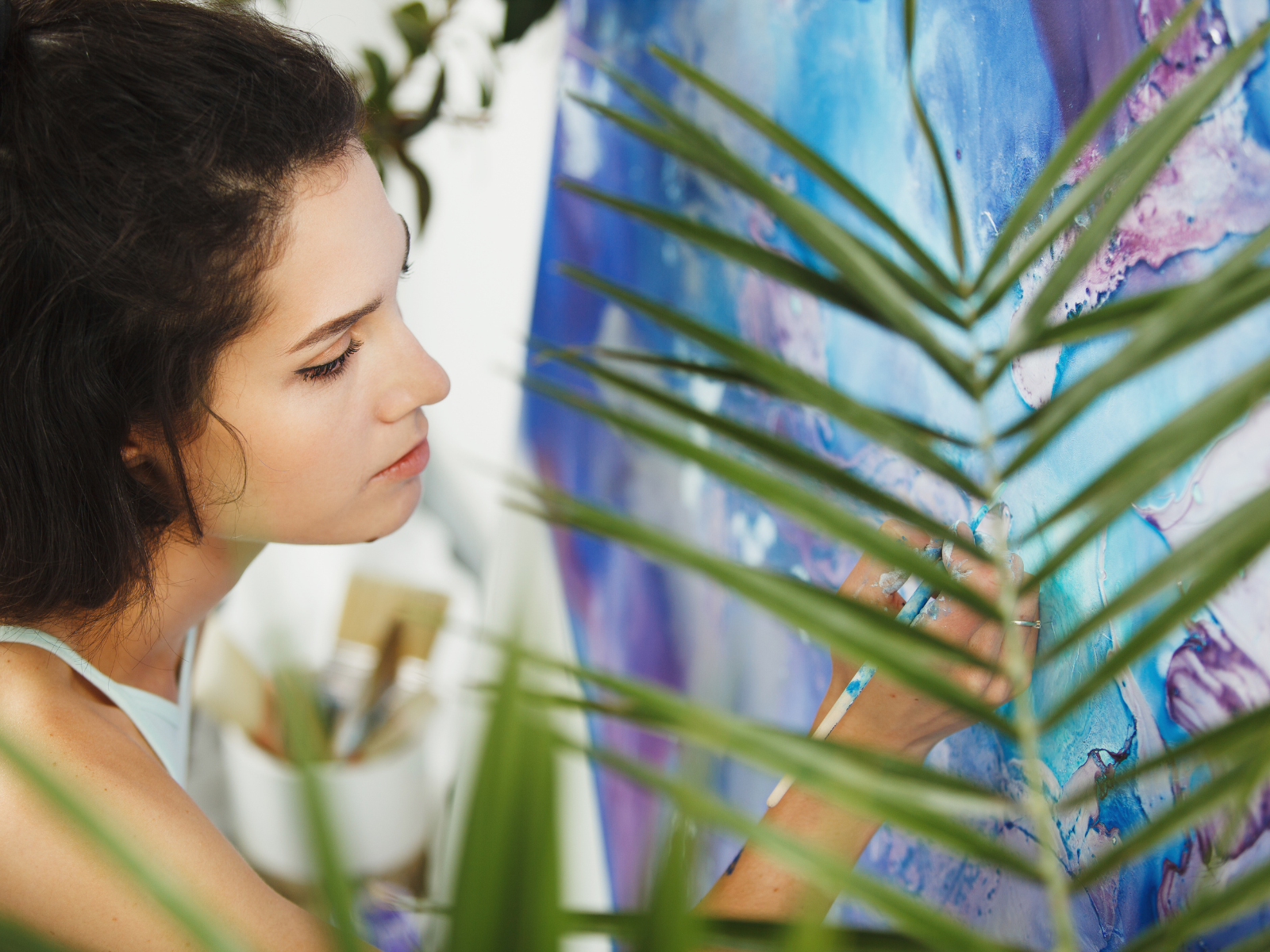
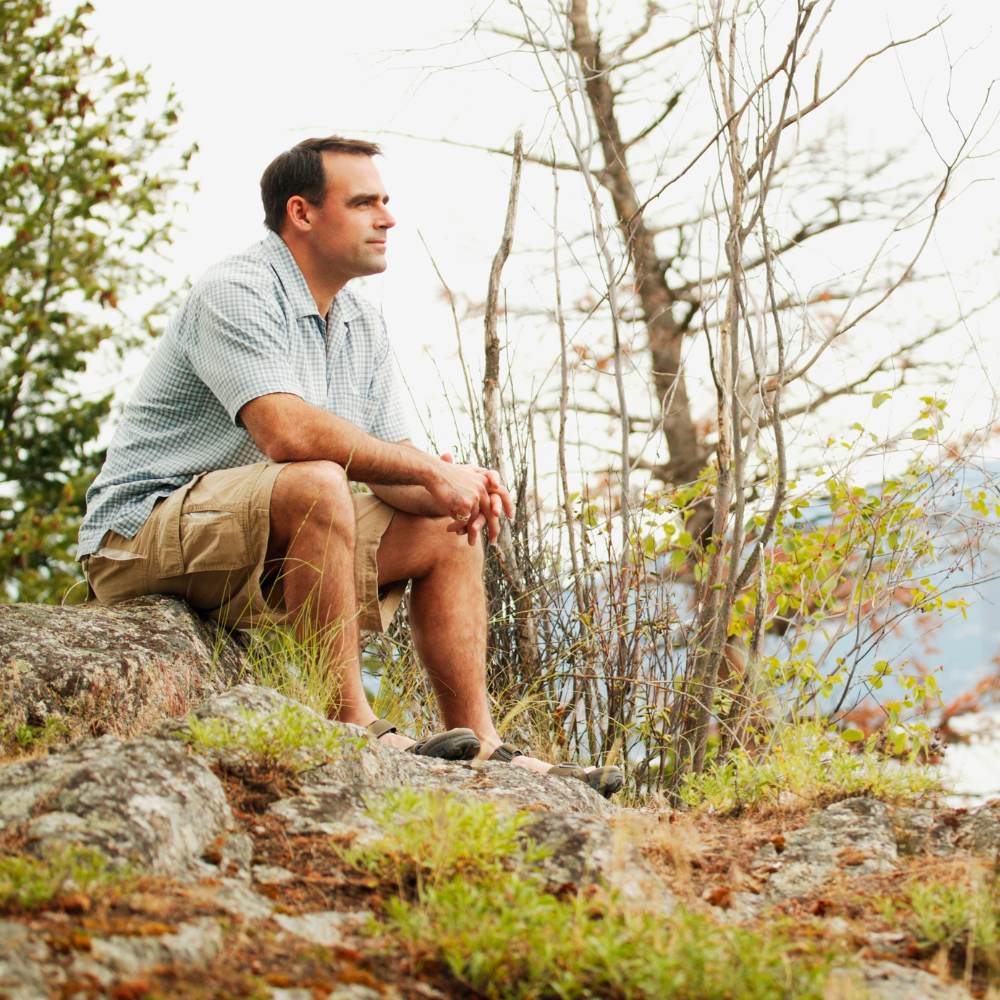
Tap into Creative Gold: Benefits of Reflection
There are countless benefits to incorporating reflection into your creative process.
The key to unlocking your creative potential lies in self-reflection.
When you take a step back and look at your work objectively, you can gain a much deeper understanding of the creative process.
Self-reflection enables you to explore your thoughts, feelings, and beliefs in a way that will help you to create something unique and authentic.
It helps develop creative and critical thinking, letting you see where you have gone wrong, identify areas for improvement, and come up with innovative ideas.
Plus, it can help to build self-esteem and give you the courage to take risks and pursue creative projects that you've always dreamed of.
Reflection is also an invaluable tool for creative problem-solving, whether you're in middle school, older students pursuing the visual arts, or a professional artist.
It encourages you to think outside the box and come up with creative solutions to problems that have been holding you back.
Educators use self reflections and group reflection throughout the school year as exit tickets, think pair share activities, and as a way to check for student understanding.
The same process can be effective in art, allowing you to think about the concepts behind your work and make changes that enhance the overall artistic outcome.
Additionally, reflection helps to build emotional intelligence, allowing you to better understand how others may perceive your art.
It can help you to become more aware of the emotions that drive your creative decisions, so you can create work that resonates with your audience.
When you take the time to engage in self-reflection, you can open up an entirely new world of possibilities and unleash your creative potential.
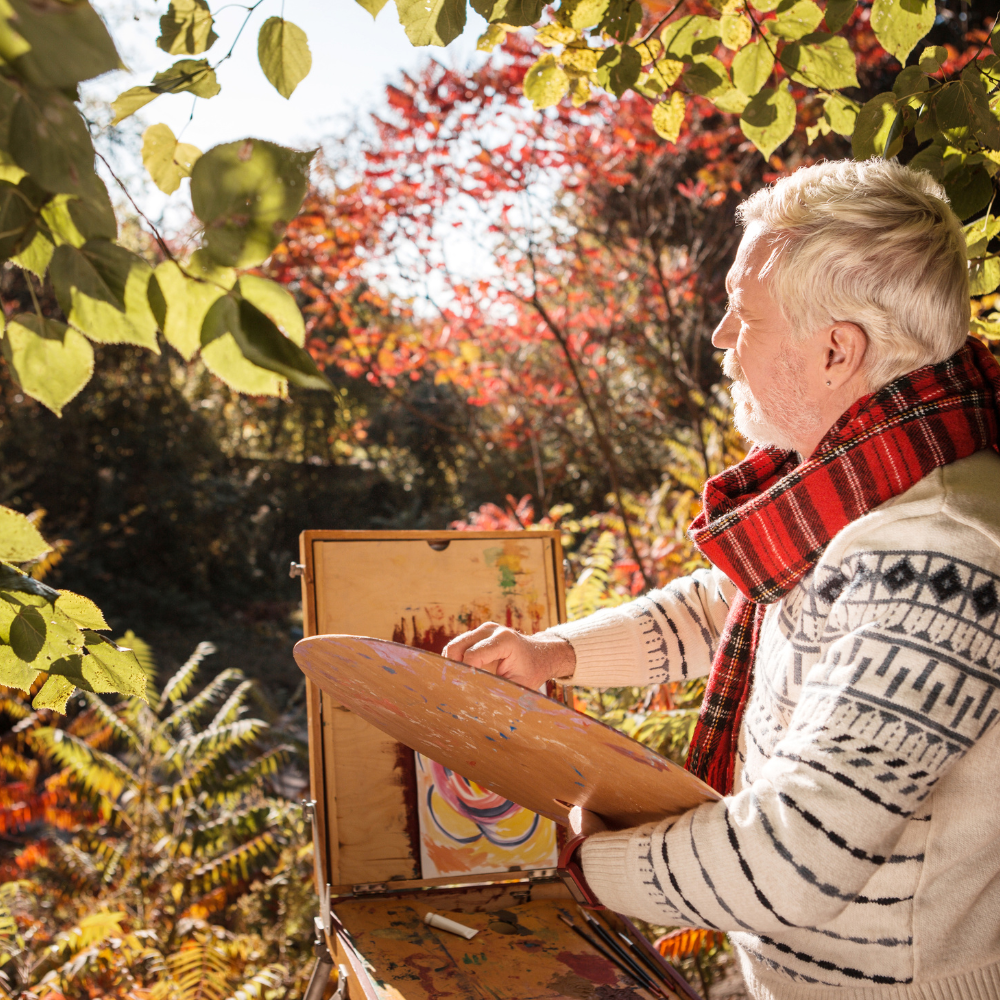
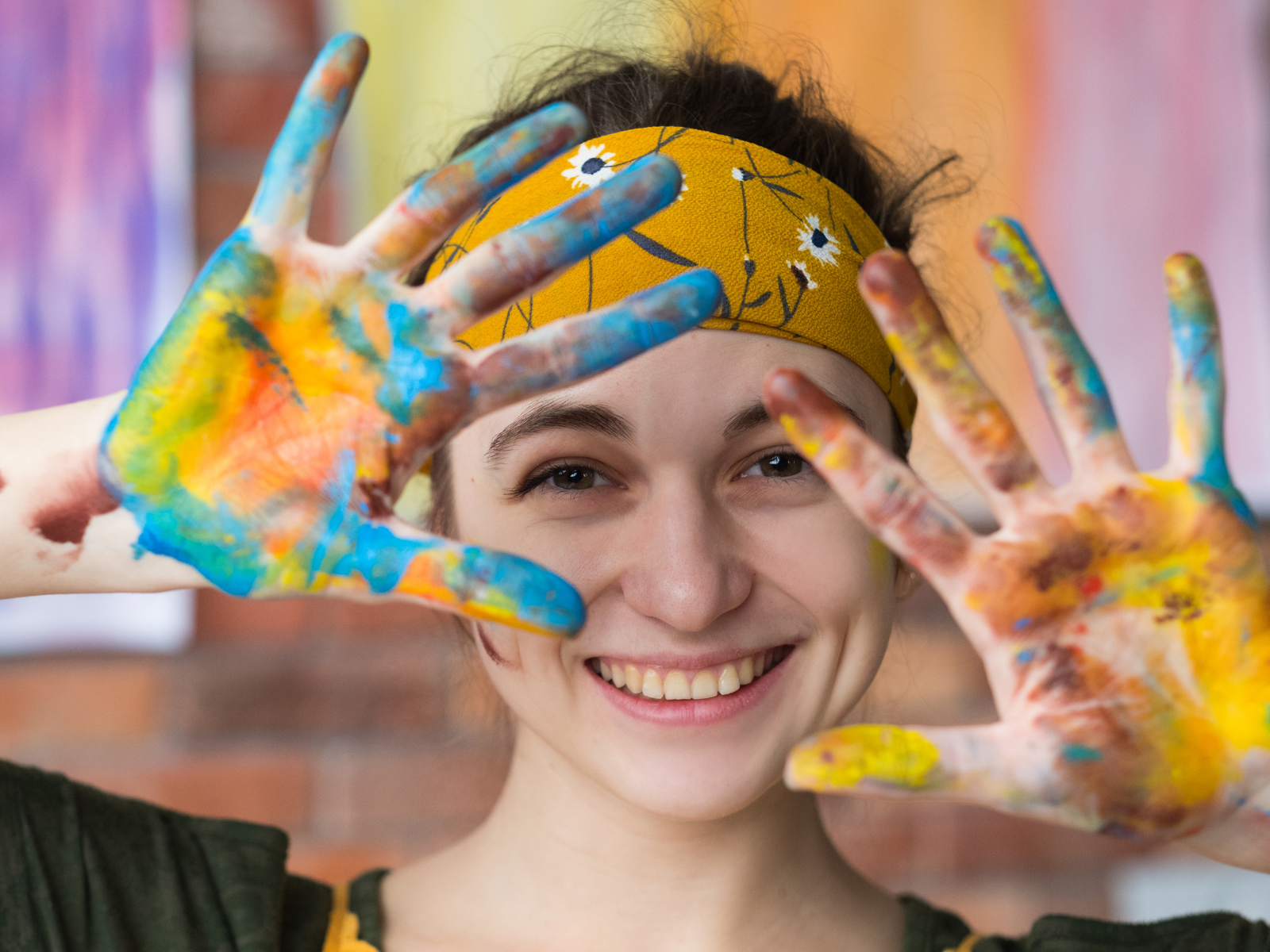
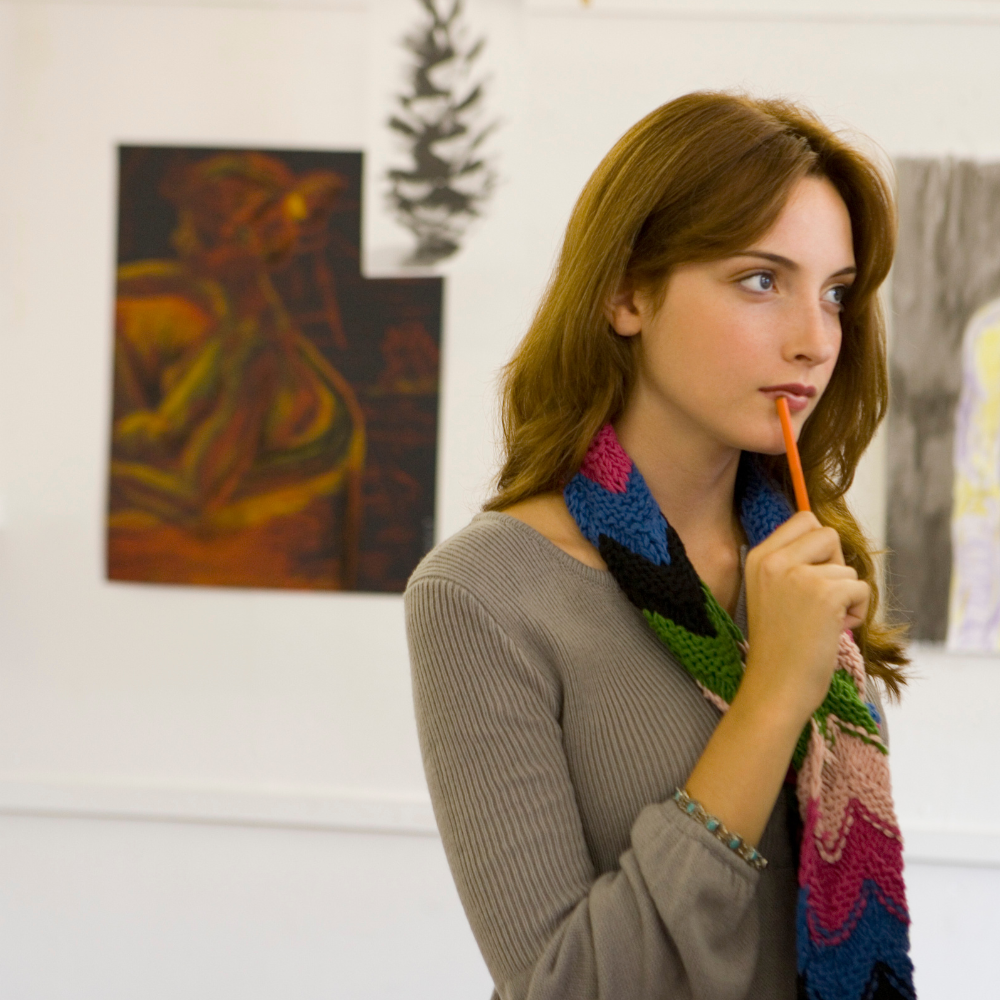
Tips to Harness the Power of Reflection:
The ability to reflect on one's creative process is a valuable skill for any artist.
It helps to free us from the restraints of convention and encourages us to explore new perspectives.
Now that we've explored the transformative impact of reflection and meditation on art, let's look at some practical ways to incorporate them into your creative process:
- Embrace Solitude:
Find a quiet space where you can connect with your thoughts without distractions.
- Journal Your Thoughts:
Document your thoughts, ideas, and emotions with an art journal.
Over time, you'll see patterns and insights through your creative journaling that can fuel your art.
- Practice Mindful Observation:
Spend time observing your surroundings.
You'll start noticing details that can inspire your art.
- Experiment with Different Mediums:
Don’t limit yourself to one art medium because experimenting with different materials can open new avenues for expression.
- Make Time For Reflection:
Take time to reflect on your art, consider the feedback from others, and adjust your approach accordingly.
- Explore Meditation:
Meditate daily and connect with your innermost self; you'll gain perspective that can inspire your creative process.
By taking the time to reflect on our process, we can unlock our innermost selves and express ourselves authentically.
Reflection and meditation are powerful tools for unlocking creative potential; if you're willing to put in the work, they can help you explore the depths of your creativity and create art that is true to who you are.
So, how do you start exploring the art of reflection?
The best way is to start small and incorporate it into your artistic process.
Set aside some time every day for reflection, even if it's only a few minutes.
Find a comfortable spot, close your eyes, and take some deep breaths.
Then, focus on your breathing and allow yourself to be present in the moment.
Allow yourself to be open to whatever thoughts and feelings come up—you don't need to judge or scrutinize them, just observe.
This simple exercise can help you explore the depths of your creativity and discover new insights that will fuel your art.
So, what are you waiting for?
Get started on your journey of self-reflection and discover the artist within!
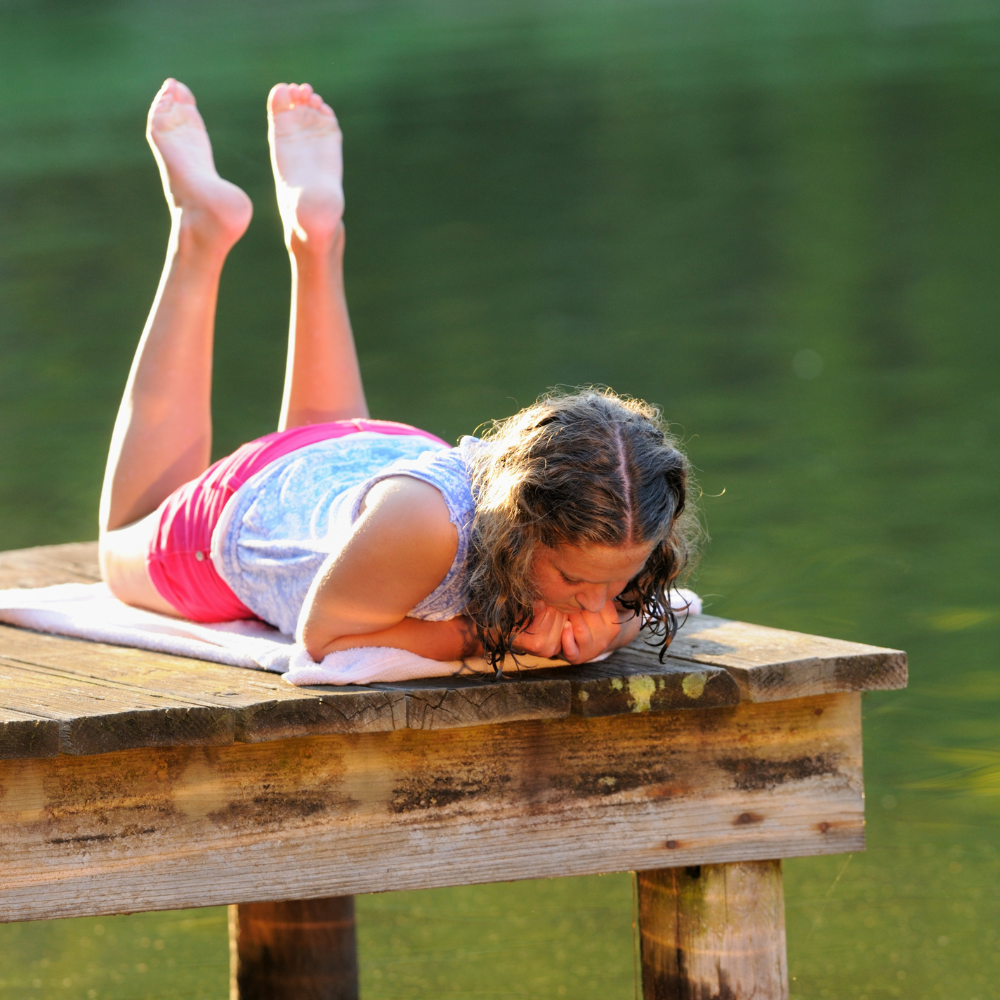
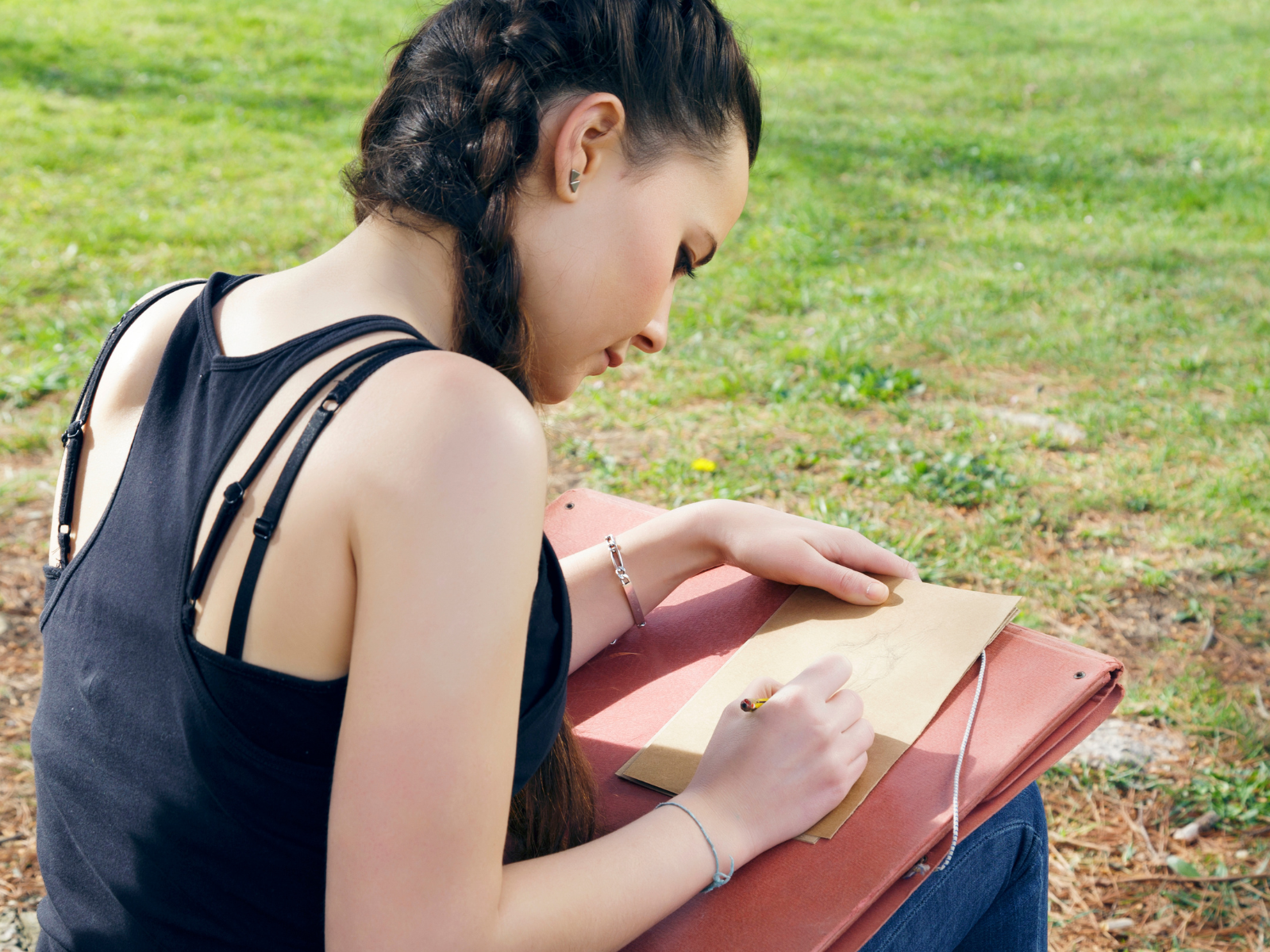

Reflection: Secret Ingredient to Artistic Success
Incorporating mindfulness and reflection into your artistic practice can take some time, but it is well worth the effort.
The benefits of meditation extend well beyond just boosting your creativity.
It helps you connect with yourself on a deeper level, allowing you to tap into your innermost thoughts and emotions.
Plus, it allows you to break free from traditional conventions and create art that is unique and personal.
If you're an artist or creator, taking time to reflect on your art and meditate will have a transformative effect on your creativity.
Whether you're an experienced professional or a budding creative, we hope this post has inspired you to embrace reflection in your artistic journey.
To wrap up, remember this: the power of reflection in art is transformative.
It's a tool that challenges conventions, spurs innovation, and deepens your connection with your art.
The next time you stand before your canvas, take a moment to reflect because you might be surprised by the magic that unfolds!
So, go ahead and explore your creative potential by embracing the power of reflection and meditation in your art--you won't regret it!

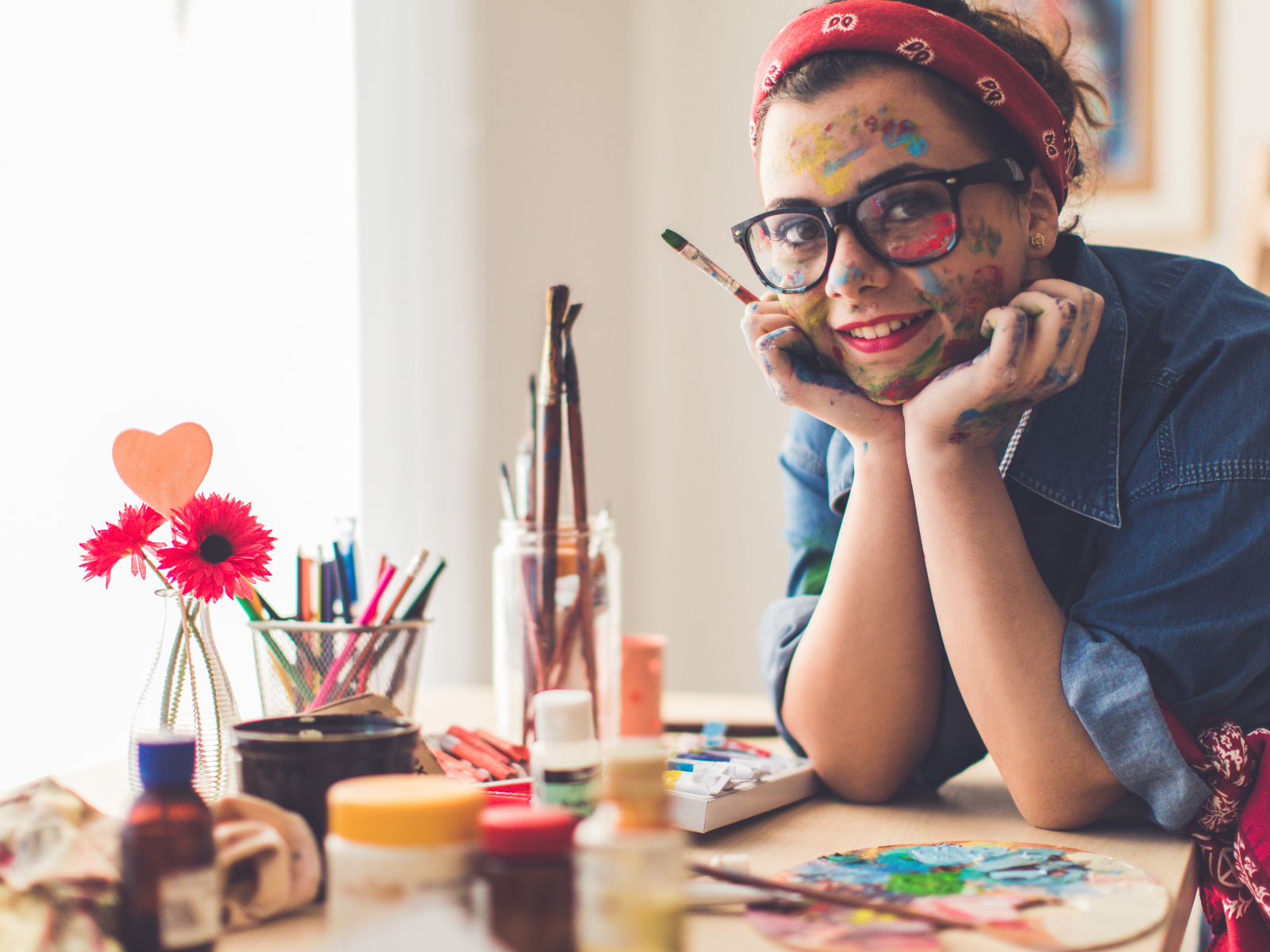
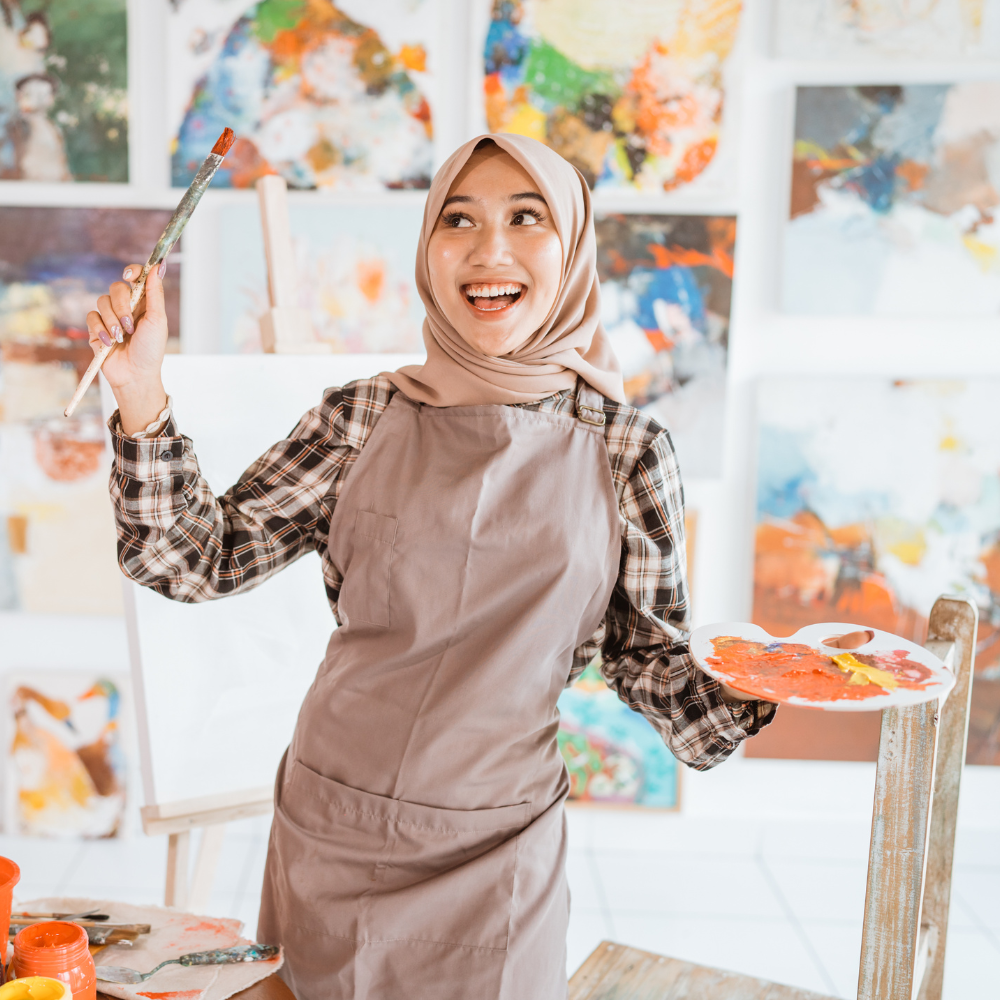
Ready to tap into the therapeutic benefits for reflection? Check out Erica Pant Art's video!
Want even more content about creativity and art?
Be sure to check out all of our creative chronicles!
Eager to learn more about meditation and mindfulness?
Check out some of our other articles:

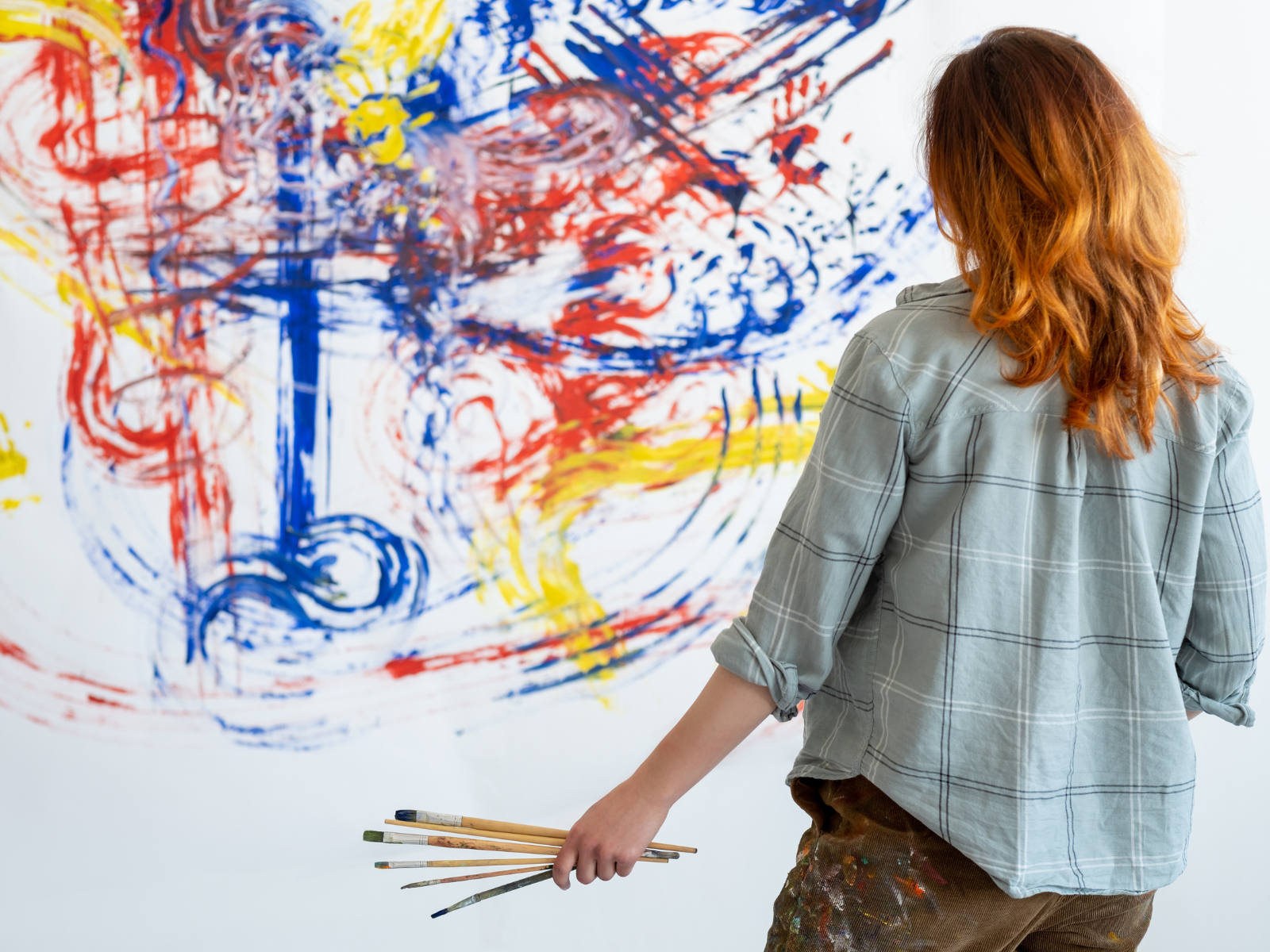
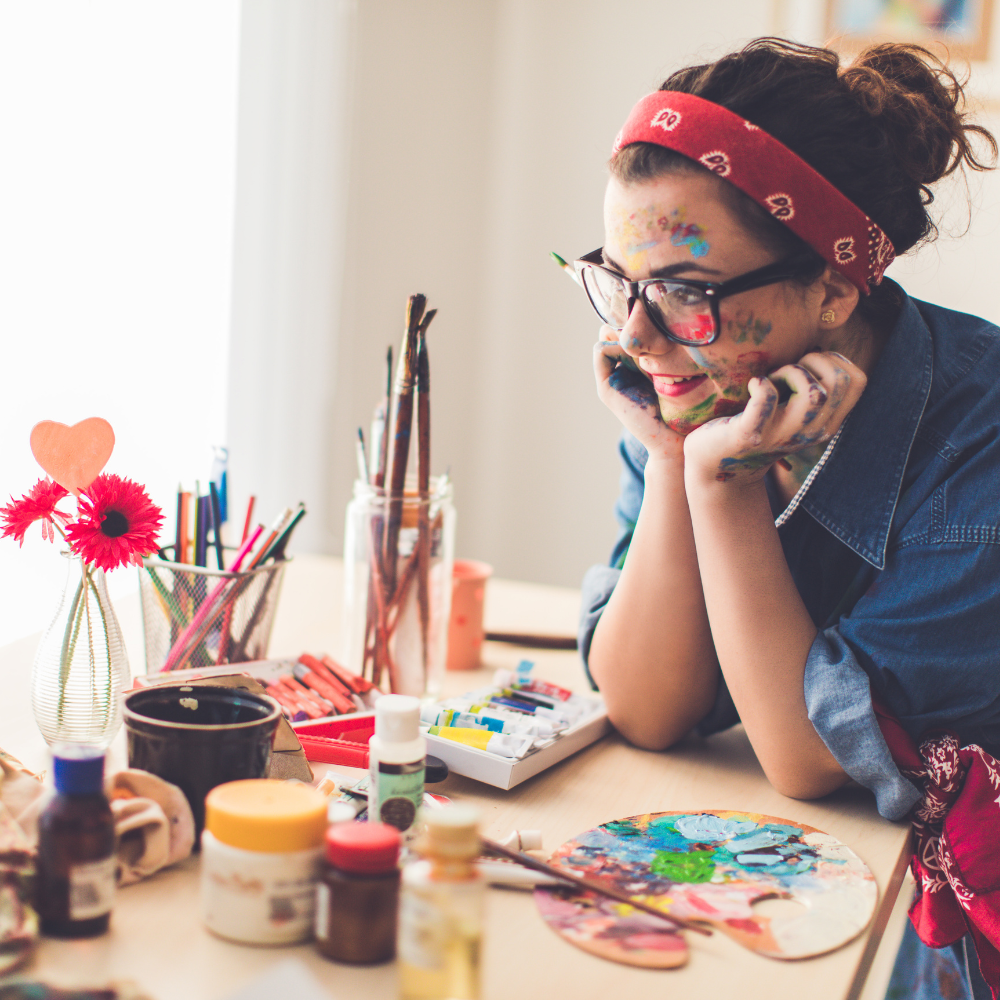
Eager to dive into your next art project?
Check out some of our other articles:
-Choosing the right art supplies
-How to express your creative side
